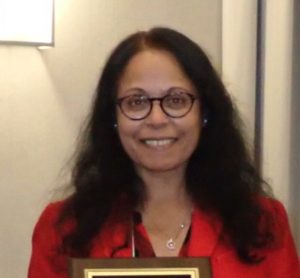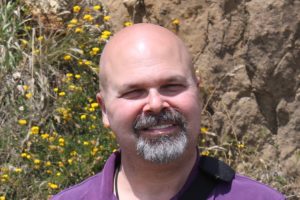SECOND CALL: SEDAAG is soliciting nominations for the AAG Regional Councilor from the Southeastern Division. The Regional Councilor position, chosen by AAG members in the Southeastern Region, is a 3-year term that begins on July 1, 2020. The Regional Councilor takes part at both the AAG and SEDAAG meetings.
Eligibility: AAG members residing within the Southeastern Division; Must not have been an AAG employee for three years from end date of employment.
Please send any nominations for REGIONAL COUNCILOR to SEDAAG Nominations Chair, Tom Chapman (techapma@odu.edu) by February 17, 2020. Nominees should submit a Biosketch that outlines any prior commitment to AAG and SEDAAG. Eligible voters comprise all AAG members in the Southeastern Region.
Description of Position:
If you are curious about what a Regional Councilor does, John Kupfer, the current Regional Councilor for the Southeastern Division, describes the position from his personal experience, below. If you know of qualified and interested candidates, please touch base with them to gauge their interest and commitment.
The primary role of the Regional Councilor is to serve on the AAG Council, which is comprised of the AAG President, Past President, and Vice President, as well as National Councilors elected by the entire AAG membership and Regional Councilors elected by each of the AAG regions. The Council serves as the governing body of the AAG, establishing committees and determining Association policies and procedures. As Councilor, you will be involved in appointing Editors, Assistant Editors, and Editorial Boards for the AAG’s journals, approving the organization’s budget, and developing, implementing and supporting new projects. You will likely be asked to serve on ad hoc committees associated with AAG initiatives, and you will have the opportunity to serve as liaison to a range of AAG Committees. Regional Councilors are also eligible to serve as AAG Secretary or Treasurer. In short, you’ll get to learn a lot about how the AAG works and have input that really can make a difference in the success of our organization.
Within SEDAAG, the Regional Councilor serves on the Executive and Steering Committees and thus has a role in shaping our organization’s activities and policies. You will get to review, comment on, and approve SEDAAG’s budget and any proposed financial initiatives, help to select upcoming meeting host sites, and be involved in the selection of editors for Southeastern Geographer. As with the broader Council responsibilities, it’s your chance to make a difference in the direction and success of SEDAAG.
So, your first question is probably: How much time will this take up? Regionally, the Councilor makes a short verbal report at SEDAAG’s annual meeting about important AAG activities that could affect the region, and prepares a brief report on the region that is submitted to the AAG Council at our spring meeting. We transact some business by email and phone, as well. All told, these responsibilities are fairly minor. For AAG Council, you are expected to attend two Council meetings annually, one in the fall (November, in recent years) and one in the spring (which takes place at the AAG Meeting site immediately prior to the start of the meeting). Council meetings entail an afternoon arrival and brief meetings and dinner on Day 1, a full day of meetings on Day 2, and meetings until noon on Day 3. I also served on an ad hoc committee for the Professional Geographer and a Presidential taskforce on the state of AAG regions, among other things. Most notably, I also was a member of the Search Committee to select the new AAG Executive Director following Doug Richardson’s retirement. Some assignments are fairly minor; others can be more time consuming. You have some control over how involved you get, but you need to be aware that you will serve in your role as Councilor for 3 years.
Given that, your second question might be: What do I get out of it? Primarily, you get to contribute to AAG and SEDAAG and work with a bunch of interesting people, including not only other Councilors and several AAG Presidents, but also the Executive Director, Meridian Place staff, and AAG members from around the world. I’ve made a number of good friends and professional contacts through my service, and I feel that I’ve helped the organizations in some fairly fundamental ways. I also understand better why some things work the way that they do. By the way, there is no honorarium, but AAG does cover all of your expenses for Council Meetings.
Finally, you might be wondering: Do I really have anything to contribute? The answer is almost unequivocally: “Yes”. Council needs a diverse range of viewpoints to function well. That means scholars from not only different specializations across geography, but also perspectives from people of diverse backgrounds and varied academic institutions. Many of the regional Councilors with whom I’ve served come from ‘teaching’ institutions, and the reality is that such settings make up a huge percentage of our membership. Council isn’t really about your research background – it’s about how you can contribute to helping AAG and SEDAAG better serve our members.
If you have additional questions about the position or John’s experiences, please feel free to contact John directly at: kupfer@sc.edu.


